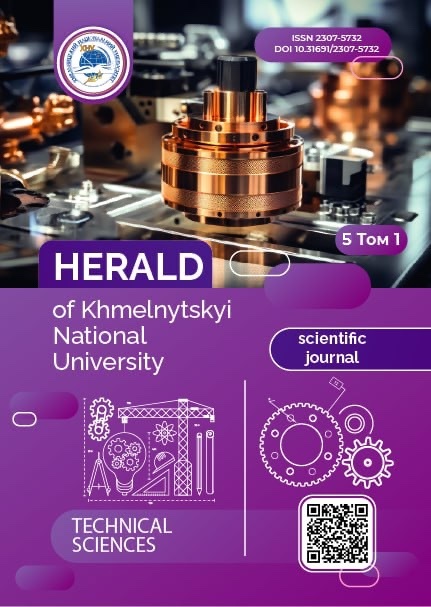SYNTHESIS OF A STATOR FLUX LINKAGE OBSERVER IN THE CONTROL SYSTEM OF A DOUBLY FED MACHINE
DOI:
https://doi.org/10.31891/2307-5732-2025-357-26Keywords:
doubly fed machine, vector control, flux linkage observer, Lyapunov function, quadratic formAbstract
The paper presents the structural and parametric synthesis of a stator flux linkage observer as part of a vector control system for a doubly fed machine (DFM). The observer model is based on the electromagnetic equations of the DFM, supplemented with corrective feedback based on current mismatches. The equations of the open-loop stator flux linkage observer for the DFM are analyzed for stability. It is revealed that the quadratic form of the total time derivative of the Lyapunov function along the observer trajectories is not negative definite, and therefore the conditions for stability are not fulfilled. As a result, a structure of a closed-loop stator flux linkage observer with corrective feedback based on rotor currents is proposed. The coefficients of these feedbacks were selected to ensure that the matrix of the quadratic form of the total time derivative of the Lyapunov function becomes diagonal. A diagonal matrix whose all coefficients are negative satisfies the conditions of negative definiteness, which ensures the stability of the flux linkage observer in all operating modes of the DFM. The structure and parameters of the corrective feedbacks were determined using the conditions of Lyapunov's second stability theorem. The stability of the vector control system with the observer was tested under parametric disturbances of different signs in the stator and rotor resistances. As a result, an observer with feedback based on rotor current mismatches was obtained, which has significantly greater stability margin than the open-loop observer and lower sensitivity to parametric disturbances. The dynamic performance of the DFM confirmed that the synthesized closed-loop observer remains stable under deviations of the machine’s active resistances from those used in the observer model. The analytical results presented in the article were validated through mathematical modeling.
Downloads
Published
Issue
Section
License
Copyright (c) 2025 ОЛЕГ КЛЮЄВ (Автор)

This work is licensed under a Creative Commons Attribution 4.0 International License.

